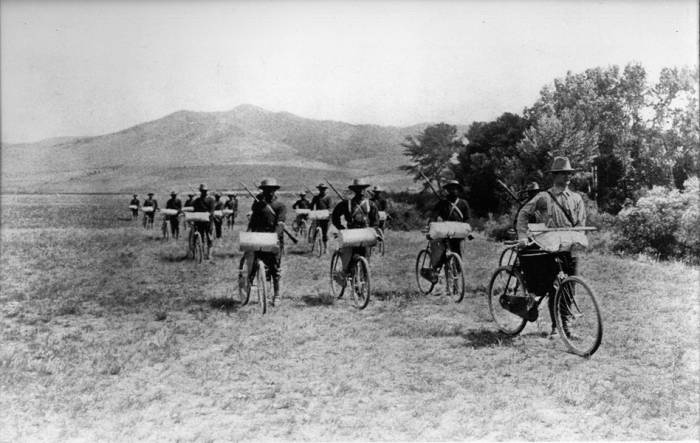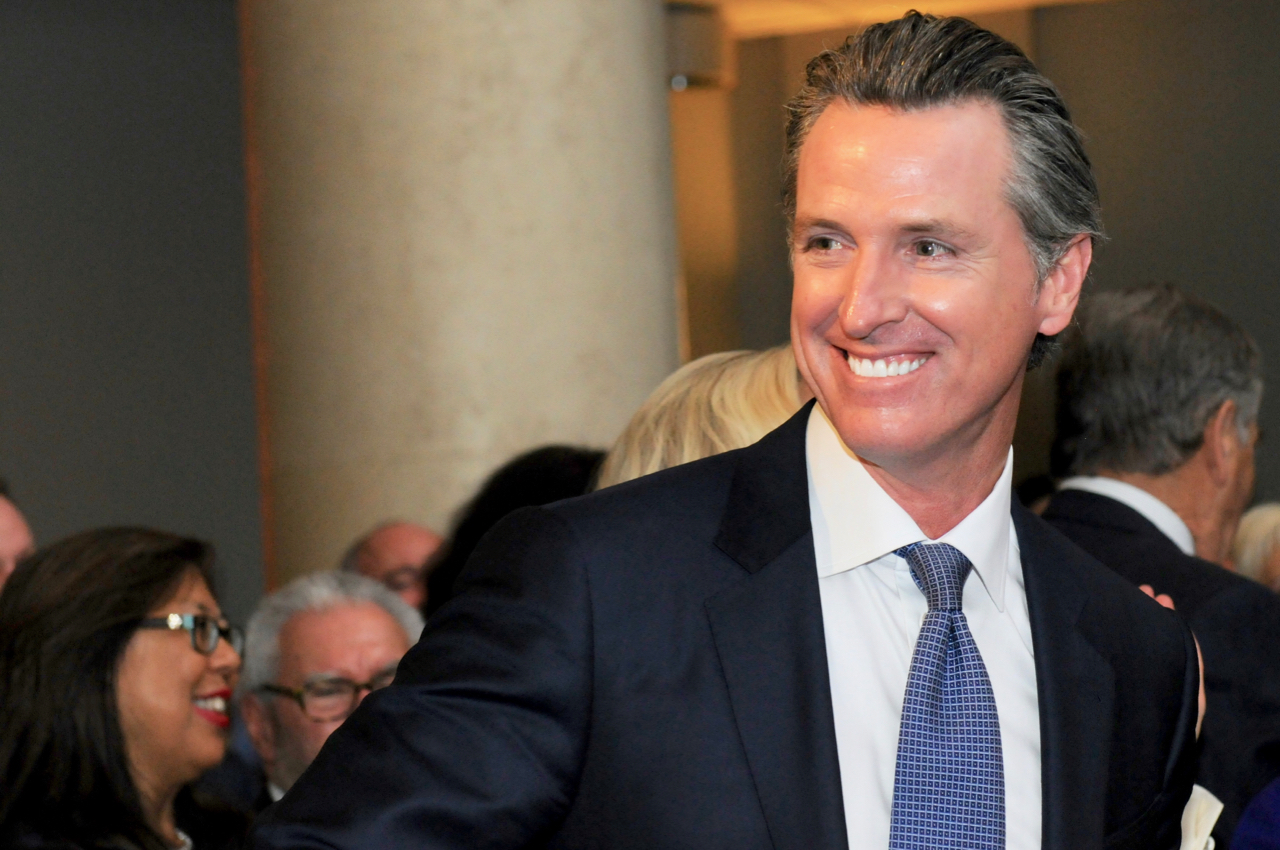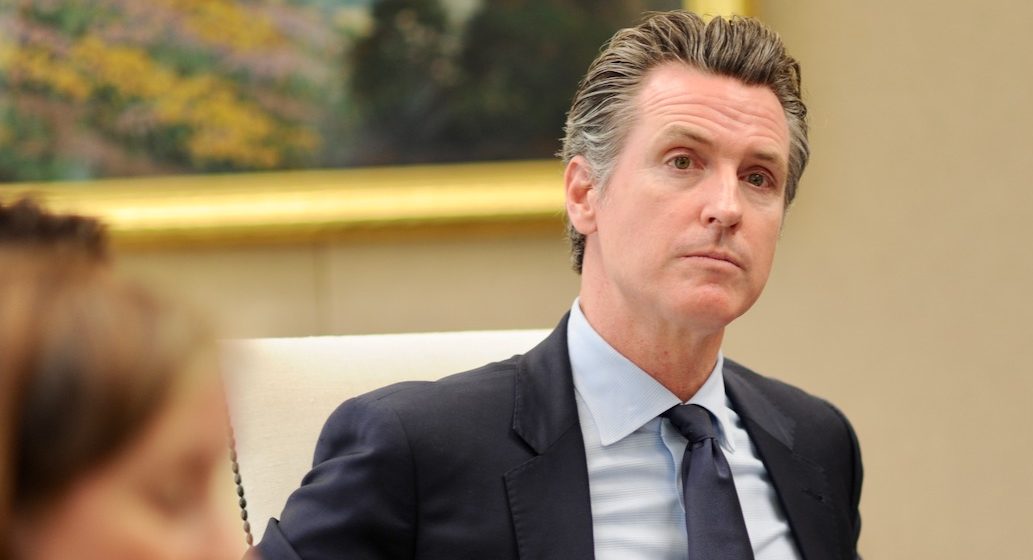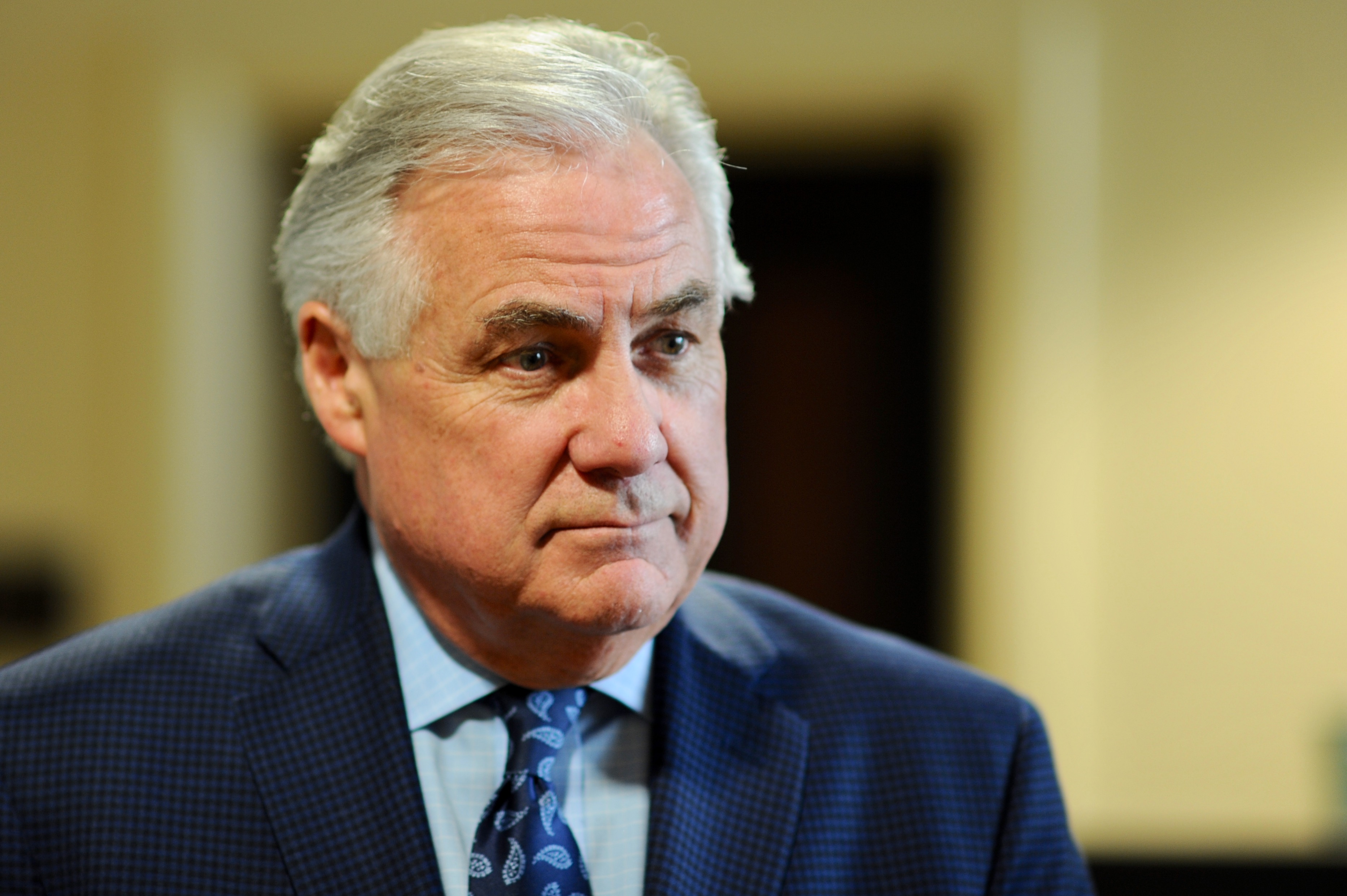
American Bicycle Corps at Fort Missoula in 1897. (Photo: Wikipedia)
Governor’s Theft of Gas Tax Funding: Reduction in Auto Lanes, Increased Bike Fatalities
Bicycle proponents blame large SUVs and more autos on the road, instead of fewer auto lanes
By Katy Grimes, January 31, 2020 2:39 pm
Sacramento, La Quinta and San Luis Obispo are among the cities that have been awarded gas tax dollars to create protected bike lanes by eliminating or reducing the size of lanes used by motor vehicles.
When Governor Newsom signed Executive Order N-19-19 September 20, he directed the already controversial, voter-approved gas tax money away from fixing local highways (as voters were promised) in favor of rail projects. Simultaneously, cities have been using the funding not to improve roads or increase auto lanes, but instead for ongoing “road diets” and increasing bicycle lanes.
But the attempt to get California drivers out of their cars and onto public transit or bicycles isn’t working out as central planners hoped.
Is Newsom Punishing More Conservative Regions?
Newsom’s latest road plan for California eliminates two important highway expansion projects on vital freight corridors in Central California. Plans to increase stretches of Highway 99 from four to six lanes in the Central Valley have been put on the back burner.
“Governor Newsom is intentionally starving us out of our roads,” Assemblyman Jim Patterson told California Globe in October. “Voters approved SB 1 with the promise that our crumbling highways would get the attention they deserve. Instead of building capacity, our gas tax funds are being siphoned off to fund Newsom’s favored pet-projects,” Patterson said. “Governor Newsom’s promise not to forget about the Central Valley is full of hot air, just like his climate plan.”
Bicycles and Cars Fighting for Roadways
It’s as if the Governor wants California residents to reach back to the 19th Century when bicycles and trains were the only transportation, other than horses and wagons.
Coinciding with California’s reduction of automobile lanes and the increase of bicycle lanes in congested cities comes a new report from California Healthline showing that more cyclists died in traffic accidents from 2016 through 2018 across the state than during any three-year period in the past 25 years. California Healthline is a service of the California Health Care Foundation, which says it is “especially focused on strengthening Medi-Cal.”
However the article claims the increase in bicycle fatalities is because there are more autos on the road and “bigger autos like SUVs often have larger blind spots than those of smaller cars, making it more difficult to see a cyclist.” And it was not noted that California routinely has the highest number of bicycle-related fatalities of any state in the United States.
The article also omitted how many bicyclists were not wearing helmets.
“The more people are driving, the higher the probability of an incident,” said Jennifer Boldry, director of research at PeopleForBikes, a national nonprofit that advocates for greater bike access and safety, California Healthline reported.
The obvious conclusion for the pro-cycling, anti-auto crowd is to reduce auto lanes, reduce speed limits, encourage more bicycling and less auto driving. It might be a nice goal, but in California it is not realistic with the state spread out across more than 160,000 miles.
“Sacramento, La Quinta and San Luis Obispo are among the cities that have been awarded gas tax dollars to create protected bike lanes by eliminating or reducing the size of lanes used by motor vehicles,” the Los Angeles Times reported. “The goal of the project is not just to make Sacramento a more bicycle-friendly city but also to improve public safety, Sacramento Mayor Darrell Steinberg said.”
“These were streets with some of the highest numbers of fatal and serious crashes in the city,” Steinberg said. “When we looked at why, the primary collision factor on the streets was unsafe speeds. And one of the easiest and most cost-effective ways to reduce the speeds is to reduce the number of travel lanes.”
Sacramento has implemented this scheme by removing lanes for autos, and adding bicycle lanes right next to traffic. This has caused daily lengthy backups on major arteries leading into and out of downtown. This has also caused many drivers to cut through residential areas, adding significant traffic on streets once reserved for children riding bikes, mothers pushing strollers, walkers, joggers and dog walkers.
And, doesn’t idling traffic also emit more of the dreaded greenhouse gas?
Matt Rocco, a spokesman for the California Department of Transportation said, “Road diets, like other operational improvements, can help improve the flow of traffic and improve safety for the motorists, bicyclist and pedestrians.”
The Problem with Road Diets
Attempts to force people out of their cars have not worked. Lane and road diets only cause more congestion and pollution – and bicycle fatalities when autos and bicycles are forced to “share the road.”
According to the National Motorist Association, “increased traffic on residential streets is often caused by the mismanagement of the main arterials and collector streets. When cities improperly install stop signs, mistime traffic signals and underpost speed limits that have no relation to actual vehicle speeds, drivers will find other streets that flow better.”
The City of Sacramento has been implementing road diets for many years, creating total chaos downtown, and in urban residential areas. Streets that were once two-way with four lanes are now one way with two lanes, or with one lane and increased bicycle lanes.
Roundabouts have been added in some downtown urban residential and light commercial areas with disastrous results; emergency vehicles cannot navigate around them.
And autos have fewer places to park. What the central planners fail to take into consideration is that not everyone in California’s big cities lives and works downtown. Even people who choose to live downtown don’t all work within walking distance – some actually leave downtown daily to work in large data centers in the suburbs, manufacturing factories in the outlying industrial areas, retail areas, and office complexes away from downtown.
In May, the state Senate approved a bill requiring Caltrans to develop policies that encourage the creation of more bikeways, sidewalks and crosswalks on state highways that are surface streets, the LA Times reported.
Motorists are Fighting Back
“Motorists are fighting back,” the National Motorists Association reported. “In 2017, commuters using two important commuting thoroughfares in Playa del Rey became so enraged that they not only formed two groups to fight city hall but also started a recall campaign against the city councilman who championed the road diet in the first place. In October, the city reversed the road diet.”
Bicycle fatalities will continue as long as urban planners continue to try and force people out of their cars. “Motorists deserve roads that not only work, but can also be put to work,” National Motorists Association said. “That means allowing people the freedom to travel to the destination of their choice when they want with the least amount of interference. That is a fundamental principle of the American way of life. It also means keeping roads open for the movement of goods and services that is essential for society as a whole.”
In 2016, the National Motorists Association launched a STREETS THAT WORK initiative designed to influence lawmakers and educate the public on the societal benefits of freedom of mobility. The NMA initiative is the antidote for Vision Zero, which aspires by government mandate and at great cost – fiscally and in terms of personal autonomy – to reshape urban transportation.
STREETS THAT WORK advocates for:
- Improved road safety that is realistic, fiscally sustainable, and doesn’t feel like a government-mandated social experiment.
- An end to arbitrary mobility restrictions on urban streets that will decrease personal transportation options while increasing travel times.
- One set of “rules of the road” for all users so that individual and shared responsibilities are clear to all.
- Intelligent placement of bicycle paths that complement rather than displace motorized traffic.
As for the California Healthline article, they never questioned anyone except bicycle advocates. Consequently, there was no discussion of the physics involved when bicycles and autos mush share the road… physics always wins.
“Dave Snyder, executive director of the California Bicycle Coalition, or CalBike, said many California cities have made significant progress in improving infrastructure in recent years, resulting in safer roads for cyclists. Still, he said, more needs to be done in more places,” California Healthline reported.
“Some people ‘see 2,000-pound or larger vehicles going 40 to 60 miles per hour within a few feet of them, and they think, No way. That’s not safe, and it’s not fun,’ Snyder said. ‘There’s no reason why that has to be. There’s no reason why we can’t create networks of bikeways, even on the main streets, that are protected from that high-speed traffic.’”
As the National Motorists Association concludes, “motorists have the largest majority of any interest group in the country. Collectively, we have a mighty big voice when it comes to things like road diets and traffic calming.”
- ‘Fix Prop. 47’ Ballot Initiative is a Game Changer on Day 1 - April 19, 2024
- California Lawmaker Making the State More Hostile to Business - April 18, 2024
- California Democrats’ Backdoor Reparations Scheme - April 17, 2024





The residents in the town I live in also beat down a road diet on a major artery, after the town had installed two other road diets in the dead of night. One of first altered streets, which used to have unfettered access to the downtown area and thus tempting to use quite often, lost two lanes and added two bike lanes. For years I never saw ONE BICYCLE in the new bike lanes, although I once saw a man chugging along in one of those HoverRound-style motorized chairs.
A road diet has just been proposed for Hollywood Blvd. Have you ever tried to drive on Hollywood Blvd.? Well, you shouldn’t, because you’ll end up cursing like a sailor, or worse. And now they want to remove lanes for bicycles and who knows what else? Trolleys? (The transportation bureaucrats LOVE trolleys.) Gondolas? Zip lines? Why not skateboard and skate lanes? That makes as much sense as anything else. Autos are also competing with city buses on such streets, as well as bicycles. Over the years they have tried to turn Hollywood Blvd. into a tourist mecca, but pesky issues like random attacks and stabbings from the crazed vagrants and muggings from the garden variety criminals make it a place most sensible people wouldn’t choose to spend their vacation. If they knew… So I think they have bigger problems there than no bike lanes and too many cars. And as was pointed out, the cars don’t go away when bike lanes are added; instead you’ll just have mayhem.
San Luis Obispo? Why the heck are they in line for more money for bike lanes? They already have them. Everywhere. They’ve had them for years. It’s a college town and also a tourist town. As you probably already know. The downtown area has become so crowded with pet transportation projects over the last 20 or so years that it’s completely dangerous to drive it, and a lot of visitors drive it because they’re innocently driving into town for the first time! They don’t know it’s a death trap yet! One way streets. Cars parked at the curb. Bike lanes next to the parked cars. TROLLEYS. And horse drawn carriages from a local hotel. Buses, too, as I recall. It’s disorienting, confusing, distracting, not safe. It would be funny if it weren’t so incredibly wasteful and stupid and expensive on top of it. And I understand SLO has its own serious homeless/vagrant problem now, too, so why are they fiddling with this other stuff? Well, what town in California isn’t overrun with homeless/vagrants, come to think of it. Who knows, maybe the SLO geniuses got rid of the trolleys, I haven’t been there in awhile. Not that anxious to go anymore — wonder why. It used to be such a wonderful little town. Thanks for listening.
SLO is the town your police chief left her gun inside a restroom at a restaurant. Of course, she didn’t get into trouble.
Yes JF, I understand there is a set of very strange and silly “progressives” in charge up there in SLO now. As I’m sure you know. Thus the police chief appointment was a P.C. move, not a choice that rewarded competence or common sense, never mind a law-and-order mindset.
Another problem is the proliferation of 24/7 HOV lanes in SoCal, which operate to the prejudice of military commuters in particular due to their different work hours. NorCal opens them up to all outside rush hours, but Democratic governors refuse to do the same south of the Tehachapis. You’d think that the Dems in control in the legislature would override those vetoes, but they’re more interested in enticing illegal aliens into our state than easing its citizens’ ability to travel within it.
Katy, I love ypur reporting, but I think this quote is not right:
“Newsom’s latest road plan for California eliminates two important highway expansion projects on vital freight corridors in Central California. Plans to increase stretches of Highway 99 from four to six lanes in the Central Valley have been put on the back burner.”
As I recall reporting on KMJ a couple of weeks ago, Rep. Jim Patterson has managed to get the HWY 99 projects re-funded.
Also, road diets are not just a “nuisance.” Remember that a road diet in Paradise may have choked evacuation efforts in that deadly 2018 fire:
“2015 Paradise downtown street project reducing 4 lanes to 2 may have created dangerous evacuation bottleneck during Camp Fire”
https://wattsupwiththat.com/2018/11/15/2015-paradise-downtown-street-project-reducing-4-lanes-to-2-may-have-created-dangerous-evacuation-bottleneck-during-campfire/
CA motorists could always stop voting Dem.
The most ridiculous road change is the road diet. Starve commuters. Tax increase on gas and registration harm those who live in rural areas and have the super commute, which really means the lower income folks who live 40+ miles because they can’t afford to live in the cities. This is what started the yellow vest protests in France. Why would we punish those less fortunate and make their lives more miserable once they reach the cities? It’s a shame. Shame Newsome. You lie.
I am extreme irritated that they are adding toll lanes on 880 between San Jose and Fremont. Our taxes pay for these roads and we are being required pay additional with tolls? Studies have shown that elimination diamond lanes and toll lanes, allowing all cars to use all lanes, improves traffic flow thus reducing pollution. Congestion is reduced shortening the time that the vehicles are on the road which reduces the amount of air pollution created.